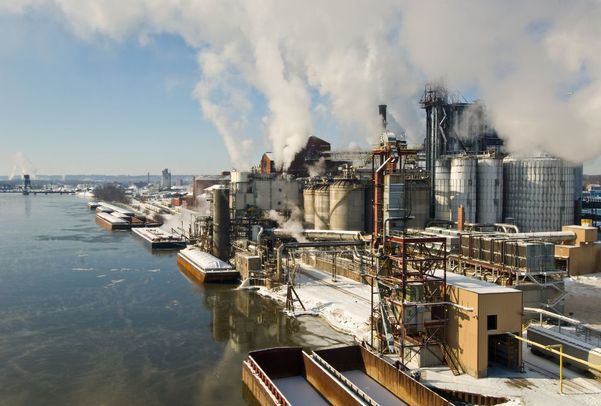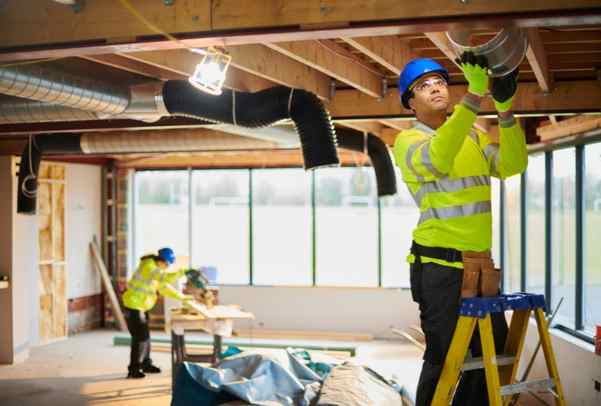The only method for process manufacturing operations to meet the efficiency targets promised by Industry 4.0 is a solid foundation in condition monitoring.
Process manufacturing has been working to apply its extensive automation expertise to a new state of efficiency linked to the next level since Industry 4.0 targets began circulating in 2010. We are not there yet, but we are making progress.
Some processing plants (especially new ones) have made significant progress toward connected systems, data and equipment.
And most new plants are starting to plan for connected systems before assets are installed.
On the other hand, legacy plants are tied to infrastructures that often support a different reality than they were designed for.
And to complicate matters further, they can have difficulty overcoming ownership silos, organizational silos and entrenched ways of working.
For all those processing plants that must continually tinker with what they have, a good foundation in condition monitoring is the best way for process manufacturing operations to achieve the efficiency goals promised by Industry 4.0.

The vision of Industry 4.0
For operations, this revolution is about connecting asset condition information based on real-time status data with maintenance teams and their systems of record.
Plant managers are aware of the megatrends currently in motion that promise to deliver ROI.
Supply chain management and logistics were early adopters of the Industry 4.0 strategy and have demonstrated its benefits.

Now is the right time for other parts of the plant to adopt this way of thinking.
Environments known as "smart factories" or Industry 4.0 connect systems to create a "smart network" of devices and operations, treating every aspect of the business as a potential revenue stream.
Imagine a digital layer operating on top of mechanical and human activities, observing, deciphering, reporting and, in some situations, continuously controlling the actions of the physical machine layer.
SCADA, as well as specific OEM machines and many other closed-loop systems, currently performs some of these functions.
Industry 4.0 encourages us to recognise the importance of operational data and convert individual systems into a unified framework that connects various aspects, not just limited to manufacturing, but also encompassing enterprise asset management.
What information would be needed to create a real-time computerized representation of plant health? Where would that information come from? What would it take to implement it?
With sufficient data history and the computational capability of AI to produce predictive and prescriptive insights, the goal for operations is to significantly increase visibility into machine health.
Every organization we talk to understands the value of pursuing predictive maintenance as a goal because it has the potential to fundamentally alter how operations contribute to the bottom line.
The 80/20, that is, 80% on-the-fly scheduled preventive maintenance and 20% on-the-fly corrective maintenance, was considered perfect years ago.

Is key to understand that schedule PMs can be a detriment over time.
That bolt, was it tightened properly? Were consumable components supplied correctly? Was lubrication performed to perfection?....
In addition, maintenance budgets are often underspent or overspent with event- and schedule-based approaches.
More and more companies prefer the asset-centric strategy, where maintenance funds are spent on what the assets themselves advise us to do.
Why condition monitoring is the essential element of Industry 4.0
Successfully applied condition monitoring is a key entry point for Industry 4.0 and the creation of new business value.
There are numerous Industry 4.0 applications, all of which presuppose data connectivity.
However, the most difficult component to get right may be that data and its connectivity.
The capabilities of analytics are limited by the availability of data.
Or, put another way, analytics systems are only as advanced as their databack-end can accommodate.
To reap the rewards of predictive maintenance in an Industry 4.0-style plant, you need a robust data capture ecosystem that can "listen" to the plant's most important assets and deliver valuable data to the right places.

Additionally, automating data collecting is frequently the most practical method for an operations team to advance.
Numerous teams note:
Too many assets to service
Shortage of asset reliability expertise
Not enough time
A shift from SMEs to "everyone does everything"
All of these challenges are addressed through asset condition monitoring.
An asset-centric data approach, where data is deliberately acquired and organized to provide asset condition information, is often in the best interest of operations teams.
For the top 20% of plant assets, condition monitoring should record signals of:
Vibration
Temperature
Power
through wired or wireless sensors.
Many processing plants focus their condition monitoring deployment on machinery that is too dangerous for routine inspection processes and too important to suffer an unplanned failure.
Examples include:
Belt-driven fans with guards blocking access to bearings.
Overhead fans stuck in ductwork.
Pumps located in hazardous, hot, hard-to-access locations.
By installing condition monitoring on these systems, you can:
Improve health and safety conditions
Obtain quantified information on the risk of damage
Avoid downtime altogether

Integrating systems
Once the types of asset data most useful for condition monitoring have been determined, the system must direct that data to a platform where it can be combined and merged with data from other operating systems for comparison with machine failure warning signals.
This is due to the fact that condition monitoring data alone is insufficient.
You have no idea what procedures were performed, when the last maintenance was due, or when an item was last serviced.
He does not know how often the asset has failed, what parts are needed to perform certain tasks, or whether those parts are available.
The engineer, however, is working blind in the absence of condition monitoring.
The more we can plan ahead to avoid machine failures, the more we can see in the future.
To create an asset health baseline capable of supporting condition-based maintenance, continuous monitoring must be integrated with properly maintained asset history and fault data, as well as specific run-time data streams.
When an asset's condition changes, technicians are notified and work is prioritized based on the asset's current condition.

Condition monitoring deployment success calls for a methodical strategy consistent with the origins of process manufacturing and a commitment to system integration consistent with Industry 4.0. A linked operations ecosystem should cover all of the following:
Data connectivity: All types and sources of data are combined into a usable location and state.
System connectivity: Integration of asset health data with related systems used by operations, maintenance and reliability.
Teams connectivity: All personnel have access to asset information, which allows for more efficient maintenance actions.
Developing a strategic plan to Industry 4.0
Condition monitoring is a common starting point for operations, and often serves as the starting point for continued progress toward networked systems.
Follow the traditional pilot methodology by focusing on feasible initiatives that address urgent needs and have clear benefits if faced with:
Legacy issues
Integration challenges
Financial constraints
Try new things, be demanding and avoid preconceived ideas about what will and will not work.
Here are three essential guidelines for moving forward:
1. Concentrating on value generators
Instead of focusing on technology, consider value backward and focus on key industry-specific value drivers.
Generate a compelling vision and deploy lighthouse pilots to motivate the organization.
2. Drive the organization forward
Promote transformation through leadership with strong business involvement.
Achieve quick economic results to prove your value from the start.
Develop skills and foster a highly adaptable culture.
Build a multidisciplinary team that involves various departments and breaks down organizational barriers.
3. Upgrade infrastructure
Establish a unified technological infrastructure based on a detailed analysis of the current situation.
Select a transition path and establish it locally before expanding it globally.
Start with a small group and make sure everyone is trained on the basics of Industry 4.0 and condition monitoring.
A basic understanding of AI and machine learning will go a long way in supporting the overall goal of connected systems.
Learn to distinguish between descriptive, predictive and prescriptive analytics.
To show potential and facilitate communication of progress, project objectives must be measurable and go slightly beyond what can be achieved with current procedures.
Senior management must be involved as a challenger, funder and, ultimately, driver.
Executives must go beyond just asking for "some IoT".
They must give the project their full support.
Condition monitoring is surrounded by abundant opportunities.
Technologies are becoming more integrated, because of:
Prices come down
Networks
Computing power
Sensors improve

Teams can now realistically extend their condition monitoring program to the next level of operations beyond their 20% asset, maximizing their initial investment into significantly greater benefits.
In addition, Industry 4.0 will have advanced even further.
Why condition monitoring is the key to unlocking Industry 4.0